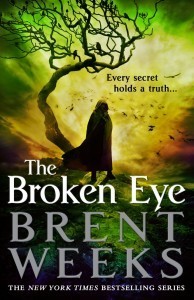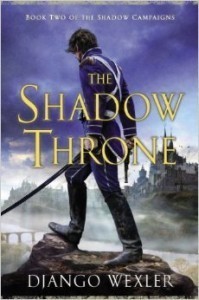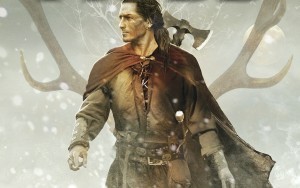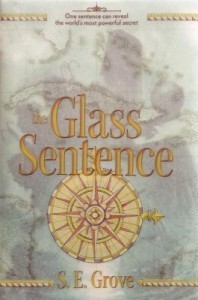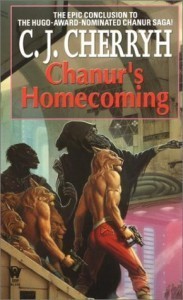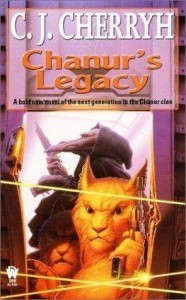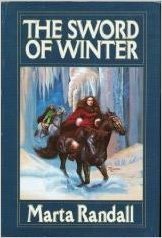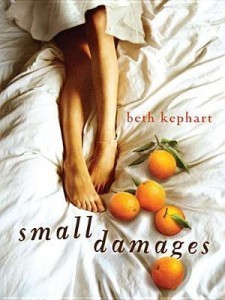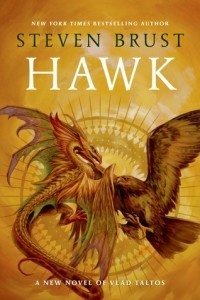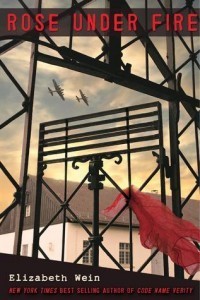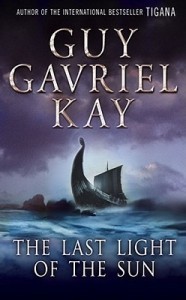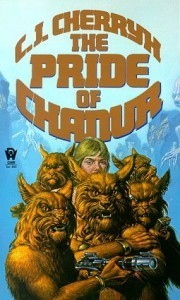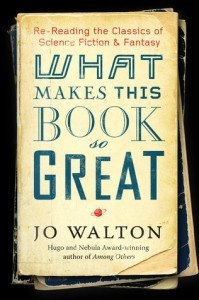Rachel Neumeier's Blog, page 365
August 7, 2014
Cute pictures you really don’t want to miss:
Craig said he missed this one, so here it is:
So hard to get out of bed in the morning!
One of my favorite cute cat pictures this year:
Look, I learned how to cut and paste the cat!
Peace in our time:
Cats and dogs, sleeping together

Interesting month from the SFBC
So, this month, I see that the SFBC is offering the third book of Brent Weeks’ Lightbringer trilogy. Aargh! Weeks has got ahead of me; I haven’t even read the second book yet. I enjoyed the first book, THE BLACK PRISM, quite a bit. His Night Angel series was just on the edge of being too dark for me and I believe I gave it to a friend, but I found that PRISM stepped that back a trifle. There was a certain If-Only-They-Could-Talk-To-Each-Other thing going that was frustrating, but at least it wasn’t that they could talk to each other but weren’t; important characters really don’t and can’t know important things that are going on with one another.
A little vague, yes. If you want spoilers, I’m sure you can find reviews that provide those.
Anyway, as I say, I haven’t read the second book, which is THE BLINDING KNIFE. And here is the third, out already:
Also in the same category is Django Wexler’s sequel to THE THOUSAND NAMES. I haven’t read that yet either, but here is the second book, not waiting for me to catch up:
Have any of you read THE THOUSAND NAMES yet? It’s always better — let me just stress this point — to pick up the second book promptly when it comes out; otherwise the series may well undergo a Series Death Spiral, producing a serious impact on the author’s career. On the other hand, I hesitate to pick up the second book when I haven’t read a) the first book in the series; and also b) any book at all by the author.
The SFBC is offering Moon’s THE SPEED OF DARK again this month. Good, good: that’s one that ought to be a classic. Hopefully the SFBC is going to push it forever.
I see we have FOOL’S ASSASSIN by Robin Hobb. Mary Beth, you noted in the comments that you were looking forward to this one. Nice cover art:
I almost always like assassins . . . unless the book gets too grim, which of course with assassins, that can happen. Not sure whether to try this one or not. I liked Hobbs’ Dragon series, though I skim parts of them when I re-read them. I’ll have to keep this one on my radar and maybe give it a try. Mary Beth, I’d appreciate your opinion if you get to it before me, which I expect you will.
Good Lord Above, looks like there’s another Shannara book out. #Unnecessary, imho. I outgrew the original Shannara books long, long ago and these days wouldn’t even offer them to a twelve-year-old if I had one handy; as far as I’m concerned there are too many better books out there to bother.
Okay! And this one, a debut that caught my eye, is what prompted this post. Craig, I think this is one you might want to look at:
THE GLASS SENTENCE by SE Grove.
Boston, 1891. Thirteen-year-old Sophia Tims lives with her uncle, cartographer Shadrack Elli, in a world torn to pieces by the Great Disruption on 1799 — when all of the continents were thrown into different time periods, from the prehistoric era to the fortieth century. When Shadrack is kidnapped, Sophia sets out to find him . . .
Okay, interestingly, the SFBC is not pushing this as a YA novel. Other than saying “thirteen-year-old Sophia”, there’s no clue this is YA. Booklist’s review definitely marks it as MG/YA (grades six to nine). It’s on the long side, 500 pp, but I see the imprint is, yes, Viking Juvenile. Well, it just came out this past June and it’s already over 150 reviews on Goodreads, with a 3.99 rating, so it must work for adult readers. It’s the first book of a trilogy and I see a Goodreads reviewer notes that there is a cliffhanger ending. I think this is one to try via the Try A Sample feature for Kindle, but even if I like the sample, I doubt I’ll read it till the trilogy’s complete if we’re talking cliffhangers. Though of course if I love the sample I will buy it right away; always nice to give a boost to a debut author.

August 5, 2014
Past Reading: CHANUR by CJ Cherryh
Pride of Chanur: 1981
Chanur’s Venture: 1984
The Kif Strike Back: 1985
Chanur’s Homecoming: 1986
(Chanur’s Legacy: 1992)
People, seriously, have you read this series? If not, will you please drop everything and read it immediately so I can stop worrying about your missing out? Now, don’t tell me you have too many novels that just came out this year and no time to read a four (five) book series that’s thirty years old. I don’t want to hear it. Just go pick up these books this minute and read them. You can thank me later.
Good thing I’m not Dictator of the World, huh? Or see what I would be like. Dictatorial!
Anyway, after putting so many books by Cherryh on my lists from the last post, I wanted to mention these more specifically because they’re some of my favorites. I grant you, this is a complicated, politics-heavy series and perhaps not for everyone, but on the other hand, this isn’t one of the Cherryh series that takes a hundred pages to get moving, either. I think it’s a lot more inviting to get into than, say, the FOREIGNER series. Plus not nearly as long, of course.
Now, Cherryh can only fall so far off the radar because a sixty-book backlist plus a continually generated front list will put a net under a writer. Even so, I don’t expect many people are still going to the trouble to find the Chanur series, partly because SF is not as popular as fantasy and partly because the book blogosphere does many good things, but it also channels the lion’s share of the attention to brand new titles.
But it’s worth looking up, and not just because Cherryh writes the best alien species. She’s actually writing about what it means to be human and what it means to be a person, but even in this earlier work of hers she is writing great aliens. The hani would so appeal to modern readers who are interested in gender issues, although I think it helps to know what she based the hani on. They are based on lions. Let me give you a tiny rundown on lion behavior in case you are not totally familiar with that, and then comment about how Cherryh used this in designing her species.
I believe everybody knows that in lions, the males are much bigger than the females and that lionesses do the majority of the hunting, being faster and more agile than males. I trust no one takes this to mean that males don’t or can’t hunt, however, because that is certainly not the case. Now: lions are quite social, as everyone knows. I’m not sure whether everyone knows that males must violently take over a pride of lionesses in order to breed, driving out the resident male or males. When a single male, or more often a set of brothers, take over a pride, they kill any young cubs that aren’t theirs, thus ensuring that the lionesses will come back into season fairly soon so that they can sire cubs of their own. This is not very nice, but then on the other hand, in a bad year, lionesses will drive their own cubs off kills and let them starve, whereas males will often save cubs by letting the young ones feed with them while making the lionesses wait till later. (That part is not relevant to the hani, but I thought I’d mention it.) Male cubs are always driven out by resident males as they grow up.
Okay, now, the hani aren’t lions, of course, but lion behavior and instinct has been used to create this species. Males are big and aggressive and take over territories, which they hold until a younger male kills them in a duel. They are widely regarded as too aggressive and emotion-driven to be trusted with matters of trade or finance or politics; certainly too much so to be allowed to interact with other species. Female hani do all that. All the crew on ships are female, with ships associated with families back home. So we start with that.
Besides the hani – new to space, insular and parochial and concerned mostly with their own local politics, seriously underprepared to deal with broader issues – we have the stsho, who are timid and delicate and ultra-civilized and switch sexes (and personalities) in ways that other species find weird and unpredictable. Then we have the mahendo’sat, who are more primate-like and very, very politically manipulative. Both of those species have been in space a lot longer than the hani. Plus, we have the kif, who are quite vicious in their normal interactions with each other, never mind with other species. And finally, we have a whole slew of methane-breathers, whom no one understands but who add complexities around the edges.
Then we toss just one human into this mix. We never, ever get his pov, btw, so Cherryh is not using him to provide her readers with someone to identify with. Pyanfar Chanur is human enough in her attitudes and thoughts to play that role, which is one way (not the only way) Cherryh is playing with ideas about what it means to be human.
There had been something loose about the station dock all morning, skulking in amongst the gantries and the lines and the canisters which were waiting to be moved, luring wherever shadows fell among the rampway accesses of the many ships at dock at Meetpoint. It was pale, naked, starved-looking in what fleeting glimpse anyone on The Pride of Chanur had of it. Evidently no one had reported it to station authorities, or did The Pride. Involving oneself in others’ concerns at Meetpoint Station , where several species came to trade and provision, was ill-advised – at least until one was personally bothered. Whatever it as, it was bipedal, brachiate, and quick at making itself unseen. It had surely gotten away from someone, and likeliest were the kif, who had a thieving finger in everything and were not above kidnapping. Or it might be some large, bizarre animal; the mahendo’sat were inclined to the keeping and trade of strange pets, and Station had been displeased with them in that respect on more than one occasion. So far it had done nothing. Stolen nothing. No one wanted to get involved in question and answer between original owners and station authorities; and so far no official statement had come down from those station authorities and no notice of its loss had been posted by any ship, which itself argued that a wise person should not ask questions. The crew reported it only to the captain and chased it, twice, from The Pride’s loading area. Then the crew got to work on necessary duties, having settled the annoyance to their satisfaction.
It was the last matter on the mind of the noble, the distinguished captain Pyanfar Chanur, who was setting out down her own rampway for the docks. She was hani, this captain, splendidly maned and bearded in red-gold, which reached in silken curls to the middle of her bare, sleek-pelted chest, and she was dressed as befitted a hani of captain’s rank, blousing scarlet breeches tucked up at her waist with a broad gold belt, with silk cords of every shade of red and orange wrapping that about, each knotted cord with a pendant jewel on its dangling end. Gold finished the breeches at her knees. Gold filigree was her armlet. And a row of fine gold rings and a large pendant pearl decorated the tufted sweep of her left ear. She strode down her own rampway in the security of ownership – still high-blooded from a quarrel with her niece – and yelled and bared claws as the intruder came bearing down on her.
It was the kif, incidentally, though kidnapping is not exactly the term. I mean, yes, but it’s all political and complicated, and Tully is not important to the kif as a person. Not that anybody is really important to the kif as a person; they’re quite sociopathic by human standards. They certainly want him back, though, and so things happen, and then it all snowballs, and eventually we get a real avalanche of events tearing along, with the whole hani world at risk and Pyanfar and her crew right at the center, trying to keep their people from being buried in the rubble, to extend the metaphor.
The first book is self-contained, pretty impressive for a book that’s got this much going on and is only just over 200 pages. But really, the first four books form one story; if you pick up the second you will find that the first feeds right into it. All four combined are not that long, btw; the first is, as I said, just a bit over 200 pages; the second only 180, the third 250, and the fourth 330 as Cherryh finishes it all off. So even four put together are not such a huge commitment.
The last book, though, steps forward a generation, picks up Pyanfar’s niece (you know, the one she was quarreling with above?) as the main character, and deals with gender from the other direction: the first (well, pretty much the first) male hani crewmember, and how that works out given all the prejudice against male hani. I loved LEGACY, in fact. I loved how Cherryh finally developed the stsho, rather neglected in the first quadrilogy, and I liked seeing how Hilfy got her life together, and yes, I am very fond of Hallan, the young male hani.
So: CHANUR — one of the works that should be considered essential SF, and another argument against Michael Underwood’s contention (last post) that older works should be ignored in favor of “more relevant” current titles. This series is another that isn’t going to be outdate for a long, long time.

August 4, 2014
Academic SFF
So, over at tor.com, this interesting discussion by Michael Underwood of proper levels of SFF for literature courses — from introductory texts at the 100-200 level up to graduate texts at the 600-700 level.
100-200 level—Introductory Texts
These include survey works, which presume zero previous knowledge of a genre. These works serve to introduce common tropes (fantasy = feudal kingdoms, farmboy heroes, brave knights, wise old wizards, etc), story structures (the prophesied hero must take the McGuffin to the Place), and tones (epic fantasy’s elevated tone and archaic dialogue, urban fantasy’s wry wit and snarkiness).
300-400 level—Core Genre Texts
Texts at this level delve deeply into one or more specific elements of the genre (a more sophisticated magic system, intricate sociological speculation based on a new technology, etc.), expecting the reader to have a solid grounding in order to get the most out of the text’s deep exploration of its topic. They’re the kind of everyday texts an experienced reader of the genre might get excited about, that investigate cool elements of a genre, bringing new ideas to them, without necessarily seeking to operate on a mind-blowing or genre-redefining level.
500-700-level—Graduate-level Texts
These books are capstone works that seek to challenge the fundamental assumptions of their genre. They’re master classes of technique and conceptual ambition, or calls to arms for a revolution in the genre. They tend to be very rare, and have a smaller readership when compared to the introductory texts.
I haven’t read all of Underwood’s suggestions for books at any of these levels, but that’s okay because I thought I would propose my own set. I’m sure everybody will have their own ideas!
I will just quote one more bit first, though, as Underwood also says: The SF/F 101 books of the 1940s and 1950s are not likely to be as accessible to 21st century readers. Especially readers from diverse backgrounds looking for themselves in the genre. We cannot keep pointing people at Heinlein, Asimov, Brooks, and Tolkien forever and expect those works to resonate as strongly with people born fifty years after the books were written.
And this is all very well, but let me just say emphatically that no, Tolkien is never going to be dated. Granted, Heinlein is dated now, and I would never personally have pointed readers at Brooks anyway — Brooks, really? — but we certainly can continue to point readers at Tolkien forever.
Anyway! My suggestions follow. I’m not into making people read books they hate, so if I were actually teaching literature classes, I would offer a choice of several books and let people read snippets and choose whichever they liked. But on the other hand, as you will see, I had a hard time coming up with graduate-level titles.
100-200 introductory high fantasy, a choice of the following:
Bujold’s Curse of Chalion
McKillip’s The Changeling Sea
Moon’s Sheepfarmer’s Daughter
Hambly’s Dragon’sbane
Barry Hughart’s The Bridge of Birds
100-200 introductory urban fantasy:
Brust’s Jhereg
Briggs’ Moon-Called
McKinley’s Sunshine
100-200 introductory SF:
Bujold’s The Warrior’s Apprentice
Moon’s Trading in Danger
Card’s Ender’s Game
I think all the above are highly accessible. I don’t think any of them would read as dated, though some of them are older than others. I would have felt differently about the category of “books assigned in class” if any of those had been assigned.
300-400 advanced fantasy
Kay’s Under Heaven
Jemisin’s The Killing Moon/The Shadowed Sun
300-400 advanced adventure SF
Leckie’s Ancillary Justice
Cherryh’s Cuckoo’s Egg
Cherryh’s Chanur quadrilogy
300-400 advanced concept-driven SF
Robinson’s 2412
Cherryh’s Cyteen
CS Friedman’s In Conquest Born
Butler’s Dawn
Corey Leviathan’s Wake
Vinge’s A Fire Upon the Deep
500-600 graduate-level fantasy
Mieville’s The City and the City
500-600 graduate-level SF
Mieville’s Embassytown
Titles within each category are all in random order.
Underwood suggested Gene Wolfe and Samuel Delany for the graduate level, but I can’t assess them fairly because Gene Wolfe’s New Sun didn’t appeal to me at all when I tried it (long ago), and I don’t know that I’ve ever read anything by Delany. I do agree that China Mieville writes at that level, but couldn’t think of anybody else I think belongs at the graduate level. Except maybe A Fire Upon the Deep really belongs at that level? Or Dawn? Or Ancillary Justice? Underwood plugged it into his “advanced” category, but maybe I would tend to move it up. Not sure.
Comments, suggestions? I can’t go look at my library shelves, so I’m probably missing lots of good candidates for every level.

August 3, 2014
Past Reading: SWORD OF WINTER by Marta Randall
So, here I am in Kansas City. Beautiful hotel, ugly downtown scene. Sorry, I don’t much care for cities. As far as I’m concerned, the most attractive things visible out the tenth-floor window are the pigeons.
Very odd to be traveling for work and not for a dog show. No dogs! I hardly know how to cope.
Anyway: of course I brought my laptop. I won’t get anything actually done tonight because long drives leave me tired and headachy and in no mood for anything involving thought. I get up early, so morning before the seminar starts will be a much better time for me to work on the KERI — whoops, THE WYVERN KING — revision. No dogs to walk, how strange. My hermit tendencies are very evident under these circumstances.
Instead of working on anything, I think I will read part of SAVING FRANCESCA by Melina Marchetta. I just read my first Marchetta novel, JELLICOE ROAD, and now I’m interested in reading more by her. I have FROI downstairs on my TBR pile, but of course I didn’t want to actually carry paper with me; that is what the Kindle is for.
Meanwhile! Another old book.
It was night by the time she drew near the village. She reined in Darkness on the last shoulder of the hill, leaning forward to pat his shaggy neck while she surveyed the valley. In the light of the full moon the river shown like tarnished silver, broken near the village where the millrace kept the ice from forming. A few lights glowed in the village, yellow against the pale snow. The large, brightly lit building in the village center would be the inn, offering the last rights of comradeship and hospitality before bedtime. Folk slept early in these mountain villages, and woke with the sun. Darkness turned his head inquiringly. His breath puffed clouds in the cold.
She pulled the hood of her black talma over her head and tucked it around her throat, trying to remember the name of the village. Darkness moved down the slope. She’d already visited Helsrest, Marjoram, Three Crossings – this place would be the last, then back to Jentesi Castle. She wondered if Lord Gambin was dead yet.
So, THE SWORD OF WINTER. This book was published in 1983. Wow, thirty-one years ago. Randall just didn’t ever write enough to become all that well known, I think: half a dozen or so books and that’s it. I see that her books are still available used and some are now available on Kindle, including several free with this new Kindle Unlimited thing Amazon has started. SWORD OF WINTER is my favorite Marta Randall title, and so far it seems only available as a used paper copy.
So far I believe Elaine and Estara have read every one of the old books I’ve mentioned. How about this one? Anybody? Thirty-one years! That’s a long, long time in book years.
Okay, so, in SWORD OF WINTER, we have Lyeth, who is a Rider, an official courier. And we have Lord Gambin, who is dying and who hasn’t named an heir, so as you can imagine this story is heavy on political intrigue. Gambin is quite a piece of work. He’s the sort who invents charming concepts like secret police and other general nastiness. Now here he is dying, which is fine, of course, except he’s keen to leave the country in a chaotic mess when he dies because that’s the kind of guy he is. So this is a story about Lyeth and various others trying to make sure it doesn’t come to that.
But that would be boring if that was all it was. So, this is actually the story of Rider Lyeth and her relationship with Emris, a stray kid she picks up right at the beginning of the book, who wants to find his family; and with Torwyn, her lover that she’s not sure she can trust; and with Jandi, the guildmaster of the Riders. In other words, it’s a character-driven story, with themes of loyalty and trust that particularly appeal to me.
Plus, Randall writes great dialogue – I love the bit when Lyeth and Emris dress up as prostitutes, for example, but there are lots of nice bits. I would quote that one here, but it’s more fun in context.
We also get some great action scenes, particularly the scavenger hunt – a rose, a ring, a rock, a rhyme; a toad, a king, a dog, a chime. How about those items for a scavenger hunt, eh? The things Lyeth uses to fulfill the requirements are all clever, but my favorite is definitely the rhyme. But the best thing about this sequence is how Randall sweeps the reader through the whole scene in one rushing torrent of speed and also uses it to advance the plot; this is a scene to read the first time for fun, but the second time to see how she put it together and made it work. Very nice writing, truly.
The plot flows smoothly from front to back, the ending is satisfying, the story is entirely self-contained, the writing is excellent, and the characterization is solid. If you like high fantasy with a good bit of adventure and even more political intrigue, then THE SWORD OF WINTER is a book you might want to consider picking up.

August 1, 2014
Recent Reading: SMALL DAMAGES by Beth Kephart
And, since I’m taking a few days off before getting into the revision, here’s the first book I picked up off my TBR shelves.
The streets of Seville are the size of sidewalks, and there are alleys leaking off from the streets. In the back of the cab, where I sit by myself, I watch the past rushing by. I roll the smeary window down, stick out my arm. I run one finger against the crumble-down of walls. Touch them for you: Hello, Seville.
This book was not on any of my recent “Top ten titles I must read as soon as possible” lists. Even so, it was the one I reached for. This always happens to me: The decision of what to read depends so much on my mood at the particular moment, and what I read last, and what I’ve been working on myself, and what my next project is going to be, and I don’t know. I guess I must have felt like reading an emotionally intense contemporary YA, because as I say, this is the one I picked up.
So, the cover. Pretty, isn’t it? That’s the sort of thing that makes me edge a book upward on the want-to-read shelves. But this time I think the big thing was: I have been working on secondary-world fantasies all year, and recently re-reading some of Brust’s Taltos series which are also secondary-world, and all of that served to push me away from fantasy and toward contemporary when I reached for a book. So if you read mainly fantasy, this one might not have been front-and-center on your radar. I don’t remember any more where I heard about this title. Possibly from one of you; I don’t know.
It’s senior year, and the future should be right within reach. But for Kenzie – bright, ambitious, in love with Yale-bound Kevin – the future has been rearranged. She’s pregnant, and she’s determined not to end her pregnancy. Her mother and Kevin refuse to understand. Sent off to an old cortijo in Spain, Kenzie must find a way to endure until her baby is safe in an adoptive couple’s hands.
Yes, I suppose. Also, not really. This story is really about the broader theme of growing up and deciding, well, I suppose it’s about deciding who it is that is going to make the important decisions about how you live your life. The pregnancy is important, and I love how Kenzie has a running monologue with her baby, and how she thinks of her – a spine like a row of pearls and all that. But the theme running through this book is about making decisions, and the lingering consequences of decisions, and taking control of your life. And about what makes family; that, too.
What it reminds me of is Nelson’s THE SKY IS EVERYWHERE, but Kephart’s SMALL DAMAGES doesn’t really reach that level of intensity or complexity or poetry. Still, the resemblance is there, I think:
It’s an uphill place, then downhill. It folds and bends. It’s white like someone tipped a can of bleach, like the sun has destroyed all other colors, and then it is the color o concrete or of lemons or of sky; it’s ochre brick in fly-away towers – everything skinny, all of it bright.
You see. Beautiful prose. This is a book I particularly suggest if you love setting, because Seville is beautifully drawn.
The situations in the two stories are quite different, of course. SKY is about grief and recovery. In SMALL DAMAGES, we get the dilemma of a pregnant teenager, and here Kephart stepped back from some serious aspects of the dilemma that most girls would face, because Kenzie is from a sufficiently privileged background that she could keep the baby, if she was determined to. Otherwise, hiding Kenzie’s delicate condition by sending her to Spain wouldn’t have been possible, right? Also, I think Kephart framed other aspects of this story in ways that gave Kenzie the opportunity to make her own decisions without being seriously constrained by, well, practicality. Compare that with Sarah Addison Allen’s THE GIRL WHO CHASED THE MOON, where Julia really had no choice about whether to keep her baby. It’s not like that for Kenzie, She doesn’t have any support from her mother, but she does from the people she’s staying with in Spain. This allows her a purer focus on making her own decisions, but the flip side of that is, I think, a loss of complexity and intensity.
In something of the same way, Kenzie’s mother – seen only in tiny flashbacks – is almost but not quite completely one dimensional. This story focuses so tightly on Kenzie that it doesn’t leave much room to develop the relationship there, and in fact Kenzie is so focused on herself that I found myself in the odd position of being quite a bit more sympathetic toward her mother than she ever is.
Of course, it’s tough to develop Kenzie’s mother since she and her mother are on different continents for the whole course of the story. We never get a chance to see them together. Still, we don’t get phone calls or letters, either. On the other hand, I must admit, the reader is indeed going to sympathize with Kenzie. There’s a world of difference between the complicated but basically sound relationship between, say, Cath and her father in FANGIRL vs what seems to be a thoroughly dysfunctional relationship between Kenzie and her mother in SMALL DAMAGES. I mean, check out these contrasting scenes:
Fangirl
He turned around, suddenly concerned. “Are you pregnant? Are you gay? I’d rather you were gay then pregnant. Unless you’re pregnant. Then we’ll deal. Whatever it is, we’ll deal. Are you pregnant?”
Frankly, I think that’s one of the most perfect parental responses to a crisis ever.
Now:
Small Damages
“I can’t have her here,” my mother had told her friend Mari, over the phone. “I can’t let anybody see what she has done, who she’s become.” It was Mari who arranged for all this – Mari, who had married a Spaniard years ago and who knew someone somewhere wanting a child. . . .
“But what if I don’t like whoever it is who’s adopting my child?”
“Don’t call it that.”
“What?”
“Your child.”
I mean, good God. One can see why Kenzie is not exactly close to her mother. She may be focused on herself, on her own problems, but at least she’s a teenager. What’s her mother’s excuse for this self-centered brutality? Still, I would have liked to see more development of that relationship. I kind of expected the mother to develop more complexity and she really didn’t, or hardly at all.
The real mother-figure in SMALL DAMAGES is the cook, Estela. We get a lot more of her background, in bits and pieces – living through Franco, ugh – and it’s Estela who pulls Kenzie out of herself, too. I think Kenzie is simply more able to be emphatic with someone who is not her own mother, a situation which is highly believable. In the end, this is a simple story, but beautifully told.

Finished! And cake.
If you follow me on Twitter, you’ll know that I finished the first rough draft of KERI yesterday. Right on time!
Woo hoo!
Of course, next comes revision: I have 25 little notes to myself about revisions I need to make. That’s before I send it to Caitlin and get her no-doubt-extensive comments back and do the next round of revision. Hopefully there will be little to do with it after that; always nice when your editor likes your ms. as-is.
My simplest note is: remember Tassel is tall.
My more complicated notes are, you know, complicated.
Anyway, just by chance, I had just made this cheesecake, so I had an appropriate celebratory food on hand. This is my very favorite no-bake summer cheesecake. In the summer, I make it without a crust and spoon the filling into little dessert dishes. Thus, no need to turn on the oven!
Chocolate Marshmallow Cheesecake
1 envelope (2 1/4 tsp) unflavored gelatin
1/4 C cold water
2 8-oz pkg cream cheese, softened
3/4 C sugar
1/3 C cocoa
1/2 tsp vanilla
1 C whipping cream, whipped
2 C mini marshmallows
Put the gelatin in a little pan and add the water. Heat on low to dissolve the gelatin.
Meanwhile, beat the softened cream cheese with the sugar and cocoa. Then beat in the gelatin mixture and vanilla. Then fold in the whipped cream. Then fold in the marshmallows. Poof, you’re done. Spoon into dessert dishes and chill before serving. You can sprinkle a few more marshmallows on top if you care about presentation (I didn’t this time).

July 30, 2014
My auto-buy authors
You know, I just wanted to mention another handful of authors, because some of my favorites don’t have a huge number of titles out (yet), so they didn’t make my previous post. This list isn’t in any particular order either because good Lord, how could you ever sort them out and pick a favorite, much less order them from top to bottom? ALL of these authors are on my buy-anything-and-everything-they-write list. I just walked downstairs and gazed at my selves for a moment, and here are the auto-buy authors that jumped out at me. I wouldn’t have expected there to be so many, but here they are:
1. CJ Cherryh. I didn’t like the Rusalka trilogy, and in the future I may possibly dislike something else she writes so much that I give it away. But basically, I am certain to buy whatever she writes.
2. Martha Wells. Especially since I’m finding her books wonderful to re-read, even though I only read them for the first time about a year ago. Some of hers are going to be moving into comfort-book territory pretty soon.
3. Steven Brust. Despite TECKLA, and the rather strange format of TIASSA, I’m still right there for HAWK when it comes out later this year.
4. Sharon Shinn.
5. Barbara Hambly, especially as she seems to be concentrating mainly on her historical Benjamen January mysteries and the Ysidro vampire stories, both favorite series of mine.
6. Andrea K Höst. I doubt that will surprise any of you.
7. Patricia McKillip. Of course.
8. Robin McKinley. Also of course.
9. Laura Florand. Of course.
10. Elizabeth Wein. I don’t always want to read them *right away*, but I always want to pick them up knowing that when I have time, I will put them on the top of my list.
11. Nicola Griffith. The Blue Place trilogy was good enough I’m really looking forward to whatever else she writes — especially with all I’ve heard about Hild.
12. Guy Gavriel Kay. I notice he does have a couple titles out that I wasn’t aware of, though, particularly The Last Light of the Sun
13. Ilona Andrews. I’ve really enjoyed all their books, not just the Kate Daniels series. Plus they are such fun, quick reads that I don’t have to put off reading them.
14. Patricia Wrede. I haven’t loved all her books. Some of her early ones in particular are, uh, not up to her later quality, shall we say. Still, I’m happy to pick up and try anything she writes, and I don’t see that changing.
Plus, there are a whole handful of authors who only have out a couple books, or three, or four — not enough to be on an auto-buy list, but that doesn’t mean I won’t snatch up their next few. Merrie Haskell, say. And Sage Blackwood. I’m sure there are others. Oh, Dan Wells, though I wasn’t super-crazy about Partials, but I did like it and I’m interested to see what weird thing he might do next. (I don’t mean Partials is weird; it’s his “normal” series.) Oh! Brian Katcher, even though contemporary isn’t my thing — but then neither are romances, and that doesn’t stop me putting Laura Florand up there on my auto-buy list.
Also, I will soon go back to Elizabeth Bear’s Eternal Sky series and read that, and I could see Bear turning into first a pick-up-backlist and then an auto-buy author for me.
So, anyway, yeah, I don’t see myself running out of stuff to read anytime soon. Especially since a whole lot of the books I pick up are actually by authors I know nothing about, just because of recommendations by you all and blog posts I happen to see.

July 29, 2014
Authors I own the most books from –
Maureen at By Singing Light has a post on this and I thought it was entertaining to see where we match up. Without actually going downstairs to look at my shelves, I would bet I own at least 20 books by the following authors (in no particular order):
1. CJ Cherryh. I own all of hers except I gave away the Rusalka ones. They take up several shelves.
2. DWJ. I own absolutely all of hers now, I think.
3. Steven Brust. I think I have all of his, even TECKLA, though I am a bit surprised I haven’t given that one away. But I’ve been re-reading the Taltos books slowly and out of order and I know it’s still on the shelf.
4. Gillian Bradshaw. I have all hers except some of the SF titles.
5. Martha Wells. I have all hers, even the Star Wars titles, though I haven’t read them yet.
6. Barbara Hambly. I got rid of those dreadful Nazi books and the horrible MOTHER OF WINTER, but I have all the rest, including the Abigail Adams books she wrote as Barbara Hamilton.
7. Ngaio Marsh. I have all her mysteries and there must be more than 20.
Let’s see if I can get to ten. I’m not at home so I honestly can’t go look downstairs. Um. Don’t have my Kindle with me, either, though the only author on there I think must be close to 20 is Martha Wells. Okay let’s see . . .
8. Rumer Godden. I haven’t read all of them because it’s not like there will ever been any more! But there’s such a thing as parceling them out too slowly. I should read one sometime soon.
9. Oh, Lois McMaster Bujold, obviously. If she doesn’t have 20 yet, she must be close.
10. Sharon Shinn, probably. I think I have all her books except maybe one or two.
11. Oh, of course, Patricia McKillip! I even kept STEPPING FROM THE SHADOWS, just to be complete. I might have ditched SOLSTICE WOOD, which to me reaches backward to ruin WINTER ROSE.
Okay, can I get to a dozen? Let me think.
12. Orson Scott Card? Guy Gavriel Kay? Have either of them written close to 20 books? I don’t think I have everything by Kay and I know I haven’t liked everything by Card — I disliked the Alvin Maker series and don’t have those. I thought Card was going sharply downhill as a writer, in fact, but then ENCHANTMENT was really good.
Well, I’ll leave it there. But I’ll try to remember to actually look when I get home and see if I have another author who definitely belongs in that twelfth spot.
UPDATE: Yes, in fact. I have 17 books by Dorothy Dunnett, which is more than by Card and Kay put together. Great comments for this post; thank you all for chiming in!

July 27, 2014
Recent Reading: What Makes This Book So Great by Jo Walton
So, I picked up a e-copy of Walton’s WHAT MAKES THIS BOOK SO GREAT because I thought it would be interesting to see what she thought of AN INTERIOR LIFE and also, of course, because short little snippets about books are a handy thing to have around for reading during breakfast or whatever.
I get why someone or other (on Goodreads? I don’t remember and don’t care enough to look it up) was disappointed in this book. The columns Walton wrote for tor.com are completely unchanged from the versions that appeared online, but lack the comments on each post, so they do feel more suitable for blog entries than for essays collected in a book.
On the other hand, it’s not too annoying to google “Jo Walton Teckla” (for example), if you want to see whether commenters agree with Walton that this book is good and grows on you with re-reading (she did dislike it the first time she read it), or with me that it is not only fundamentally and unsalvageably unpleasant to read but also that the broader political situation is simplistic and unworkable.
(The answer is, lots of people apparently like TECKLA, but at least one commenter agrees with me about it.)
I do think that Brust partly saved TECKLA by writing PHOENIX, but still, I doubt I’ll ever re-read the former.
It’s interesting to me that Walton included in the book ALL of her posts on Steven Brust’s books; also all her Bujold posts. I don’t think any other author got this treatment. Cherryh got about four posts, for example, not thirty. Walton does point out things in Brust’s books that I never noticed, and after reading through her posts on the series, I re-read DRAGON. I’ve always liked that one and I haven’t re-read it so often that I have it memorized. I’d like to go back and re-read more of them, but later, later. Haven’t gotten nearly as far with my WIP this weekend as I should, but you know, I did actually come to Indy to gaze at the dogs and chat with friends — not to immure myself in my hotel room for hours and hours.
Anyway! Walton’s book has pretty much worked well for me. So far I’ve stuck pretty much to reading her posts about books I’m familiar with. They’re short and thought-provoking; not reviews but comments and thoughts — you probably knew that — and in general chock full of spoilers. In case you didn’t know that, I thought I’d mention it.
One other entertaining thing I’d like to mention: Walton has one essay about how she always goes on with series even when they go sharply downhill. Wow. I sure don’t. It’s always interesting to see how other people react to stories, but I’m having a hard time even imagining that. If everyone tells me “No, no, stop with DUNE, don’t read any sequels,” then I’m happy to stop with DUNE and don’t at all feel compelled to go on. Same with movies: If someone I trust says, “It’s almost as bad as “Highlander II”, I don’t require personal experience of the fact.
So now, I’m curious: do you all feel compelled to go on with sequels even if people you trust beg you not to?
Also, what did you all think of TECKLA? Was that a thumb’s-up or thumb’s-down experience for you? This was the single post (so far) where I disagree most adamantly with Walton’s take on a book.
I do wish she’d specifically reviewed more of Cherryh’s books, btw. The ones I’d most like to see her post about are the Chanur series and CUCKOO’S EGG.





